Does anyone have any experience growing in coconut fibre soil?
hampshire_uk
9 years ago
Featured Answer
Comments (51)
cactusmcharris, interior BC Z4/5
9 years agomingtea
9 years agoRelated Discussions
Does anyone have experience with these 'Dirt Plants'?
Comments (28)Pleiones, Habeneria, Calanthe, Pterostylus, Calopogans and a few other US native terrestrials are doing fine. The ones from China, Cephalathera, Orchis (Chususa), Oreorchis, Amitostigma, Peristylus, Neothianthe, Herminium, Gymnadenia all did uniformly bad. I still have a few of them but they are lingering, barely alive. Last year I got a few from Europe, alpine terrestrials they call them, 50% success rate only. Biggest success story is the Cypripedium experience. After getting the hang of them, I'm doing well with them. I posted a number of them on the 'Gallery forum'. Nick...See MoreAnyone have experience growing these perennials?
Comments (18)Shelley, I decided to order the Roaring Jelly sib iris from Lindenberg's instead of Vesey's. Lindenberg's is based out of Brandon and will just call me to come pick up my order as soon as it is ready rather than me getting it after a week in the postal system like it would with Vesey's. Also...Lindenberg's regular price is $4.29 whereas Vesey's is $5.95. I also decided to get the Pink Double Delight Echinacea ($9.99) through them also instead of Vesey's. (Vesey's price for Double Delight is $22.95) Right now, my order for Lindenbergs which I will call in this week (so I will for sure get them) is... Elke Geranium...$4.99 Red Admiral Geranium...$5.99 Roxanne Geranium...$9.99 Pink Double Delight Echinacea...$9.99 (Vesey's ... $22.95) Roaring Jelly Siberian Iris...$4.29 Victorian Secret Siberian Iris...$4.29 Kit Kat Nepeta...$4.99 Raspberry Sundae Peony...$19.99 (Vesey's has it for $24.95) Sword Dance Peony...$16.99 Blue Perfume Phlox...$5.99 Miss Piggy Poppy...$5.39 Fanciful Feathers Poppy...$5.39 Picolette Sedum...$5.99 I know very well that each time I go into the store I will be picking up more plants especially when they have their perennials on sale in June. But, these are the plants that I really would like so I will get them now. Brenda...See MoreAnyone have experience with fast-growing-trees.com?
Comments (29)I recently ordered from them, not knowing my order would come from China. The only tracking number they could provide was the one from China Post. I knew for a fact that these deliveries get transferred to USPS. Never got one from USPS. Tracked the shipment via Track17. Until one day, it said it was delivered, but I did not receive anything. Communicated the problem and they insisted that it was delivered to the right address, that neighbors might have received it. My neighbors know me and they'd surely give me the misdelivered item, which has happened in the past. We went back and forth on the refund. Finally settled on 50% refund. The first and the last order from them. Be warned. Sounds more like a scam now to me....See MoreWarmest micro-climate? Anyone have any experience with this?
Comments (7)Thats what I was thinking too. The south west facing wall does not get the morning sun to melt any frost that might have came. It does get a fair ammount of sun later in the day. However being near the two buildings I thought that it should hold heat longer. It also is surrounded by rocks, so maybe that can help make up for the lack of morning sun. I havn't had too many chances to see if frost is a problem there but I know I seen frost when I parked a car there. Cars always get colder than the surrounding air temps though. I seen frost on cars at 35f. The only reason I didnt suggest the south east side is because it is also in-between two buildings, so it wont get the morning sun or much sun at all during winter. The south facing wall does work fairly well for me,I just think it needs a protective canopy, and rocks around it instead of the bark I have. I have seen a few of my bananas stay green the whole winter there multiple winters, but only the ones close enough to the wall where the over-hang creates a small artificial protective canopy. The ones that have out grown it get fried every year but it usually takes 2 or more frosts. It seems to me that with a protective canopy I can keep temps up by at least 4 degrees. Even at our coldest morning this year at 28f, no frost under the canopy. I dont know when it stops becoming frost free, but 22f is a good bet. That was the coldest I ever seen and it did fry all the bananas. Usually winter is mild and stays z9b. A coconut palm I planted there stayed alive until mid/late Jan. Almost made it into spring. It dies just as we were getting 70fs in the forecast. :( Yet the week before it died we had the coldest week of the year but not coldest nights. It got foggy and temps barely reached the 40f's during the day, but at least the nights only got about 3 degrees colder at the most. It was after that it looked sick and started to shut down....See Morehampshire_uk
9 years agopetrushka (7b)
9 years agopetrushka (7b)
9 years agohampshire_uk
9 years agojojosplants
9 years agopetrushka (7b)
9 years agojojosplants
9 years agowantonamara Z8 CenTex
9 years agojdubay
9 years agonomen_nudum
9 years agolucillle
9 years agogreenman28 NorCal 7b/8a
9 years agopetrushka (7b)
9 years agojojosplants
9 years agojojosplants
9 years agoSundewd
9 years agogreenman28 NorCal 7b/8a
9 years agojojosplants
9 years agojojosplants
9 years agohampshire_uk
9 years agopetrushka (7b)
9 years agonil13
9 years agohampshire_uk
9 years agoDebbie H
6 years agoPete
6 years agoDebbie H
6 years agorina_Ontario,Canada 5a
6 years agoGabby C (FL 9A)
6 years agorina_Ontario,Canada 5a
6 years agolast modified: 6 years agoSarah(4a)
6 years agoNil13 usda:10a sunset:21 LA,CA (Mount Wash.)
6 years agoDebbie H
6 years agoLauren (Zone 9a)
6 years agolast modified: 6 years agowantonamara Z8 CenTex
6 years agococinamel
6 years agolisasfbay9b
6 years agospyarchive
6 years agoLauren (Zone 9a)
6 years agowantonamara Z8 CenTex
6 years agolast modified: 6 years agoLauren (Zone 9a)
6 years agowantonamara Z8 CenTex
6 years agoLauren (Zone 9a)
6 years agowantonamara Z8 CenTex
6 years agoChris (6a in MA)
6 years agoLauren (Zone 9a)
6 years agolast modified: 6 years agowantonamara Z8 CenTex
6 years agolast modified: 6 years agoLauren (Zone 9a)
6 years agohellkitchenguy Manuel
6 years ago
Related Stories

FARM YOUR YARDHow to Get Good Soil for Your Edible Garden
The nutrients in your soil feed the plants that feed you. Here are tips on getting it right — just in time for planting season
Full Story
HOUSEPLANTSHow to Grow Orchids Indoors
Orchids are the exotic aristocrats of the flower world and can make themselves comfortable in almost any home
Full Story
GARDENING GUIDESHow to Stop Worrying and Start Loving Clay Soil
Clay has many more benefits than you might imagine
Full Story
GARDENING GUIDESHouzz TV: Make a Worm Bin for Rich Soil and Happy Plants
A worm-powered compost bin that can fit under a sink turns food scraps into a powerful amendment for your garden. Here’s how to make one
Full Story
FARM YOUR YARDHow to Grow Vegetables in Containers
Get glorious vegetables and fruits on your patio with a pro’s guidance — including his personal recipe for potting mix
Full Story
LIFEThe Good House: An Experience to Remember
A home that enriches us is more than something we own. It invites meaningful experiences and connections
Full Story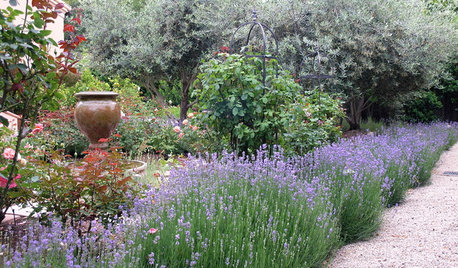
FLOWERSHerb Garden Essentials: Grow Your Own Fragrant Lavender
This do-it-all plant is ideal for almost any garden, and its uses are abundant around the home
Full Story
EDIBLE GARDENSSummer Crops: How to Grow Squash
Almost foolproof and with cheerful flowers, squash comes in a wide range of varieties to plant in spring
Full Story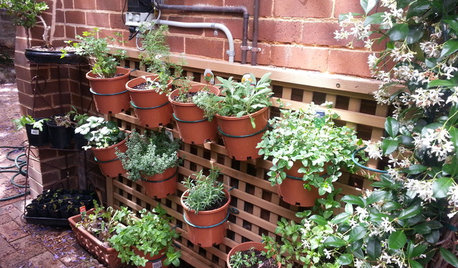
FARM YOUR YARD14 Crazy Places to Grow Edibles
Some Houzzers may lack ground for gardening, but they’re never short on imagination
Full Story
SPRING GARDENINGSummer Crops: How to Grow Strawberries
Pluck your own sweet strawberries right from the garden vine for smoothies, salads or eating then and there
Full Story



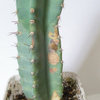
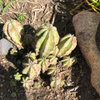
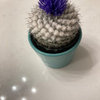
Ninkasi